Canadian Sniper (2024)
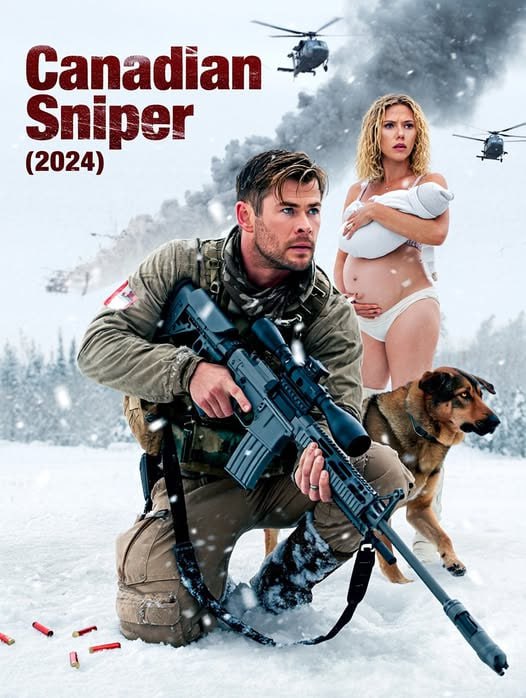
Introducing Canadian Sniper (2024): A Riveting Exploration of PTSD and Resilience
Dive into the haunting and introspective world of Canadian Sniper (2024), a Canadian drama that trades the high-octane thrills of traditional war films for a profound character study of a soldier’s struggle with post-traumatic stress disorder (PTSD). Directed and written by Michel Kandinsky, this indie gem from OnOff Company stars François Arnaud in a career-defining performance, supported by Lothaire Bluteau and Sophie Desmarais. Released on December 12, 2024, and available on streaming platforms like Prime Video and Tubi, this 83-minute film offers a raw, unflinching look at the psychological toll of war, set against the stark beauty of Canada’s urban and wilderness landscapes. Here’s a complete and comprehensive introduction to Canadian Sniper, exploring its narrative, cast, production, and significance in the war drama genre.
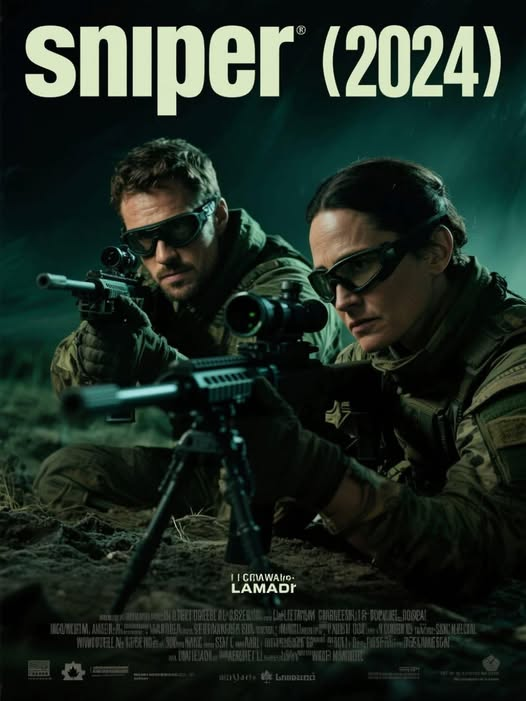
The War Drama Legacy
War films have long captivated audiences, from the visceral combat of Saving Private Ryan (1998) to the psychological depth of The Hurt Locker (2008). Canadian Sniper carves a unique niche by focusing not on the battlefield but on the quiet, often invisible battles fought by veterans at home. Unlike action-heavy sniper films like American Sniper (2014), which grossed $547 million, Kandinsky’s film aligns more closely with introspective dramas like The Deer Hunter (1978), emphasizing the human cost of war. Its exploration of PTSD resonates with contemporary discussions about mental health, drawing inspiration from real-life stories, including Kandinsky’s reflection on a friend’s suicide after serving in Afghanistan. This personal connection grounds Canadian Sniper in authenticity, making it a poignant addition to the genre.
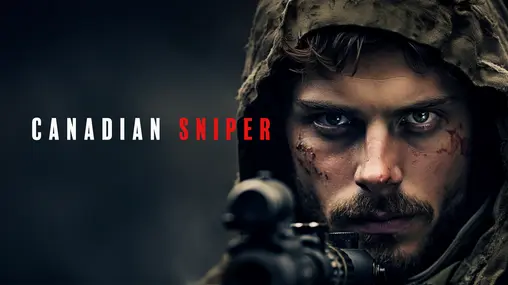
Plot and Setting
Canadian Sniper follows an unnamed elite sniper (François Arnaud), a decorated Canadian soldier returning to a remote northern farm after multiple tours in Afghanistan. Stricken with PTSD, he struggles to reintegrate into civilian life, haunted by insomnia, flashbacks, and a blurred line between reality and memory. The narrative weaves a non-linear tapestry, where time loops and fragmented recollections—gunfire, desert heat, and moral dilemmas—overlap with mundane activities like making breakfast or sipping coffee. As the sniper seeks answers about his father’s mysterious disappearance, his violent urges threaten to unravel his fragile grip on reality, creating a tense, psychological drama.
The film’s setting juxtaposes the oppressive confines of urban Canada—cold, stark cityscapes that mirror the sniper’s alienation—with the expansive, serene wilderness of northern farms, symbolizing an elusive peace. Duraid Munajim’s cinematography, a standout feature, uses light and shadow to reflect the protagonist’s inner turmoil, with wilderness scenes offering fleeting moments of solace. The inclusion of insect close-ups, likened to a nature documentary, serves as a surreal motif, amplifying the sniper’s disorientation and drawing mixed reactions for its unconventional approach. This deliberate pacing and minimalist storytelling prioritize emotional resonance over action, making Canadian Sniper a character-driven exploration of trauma and survival.
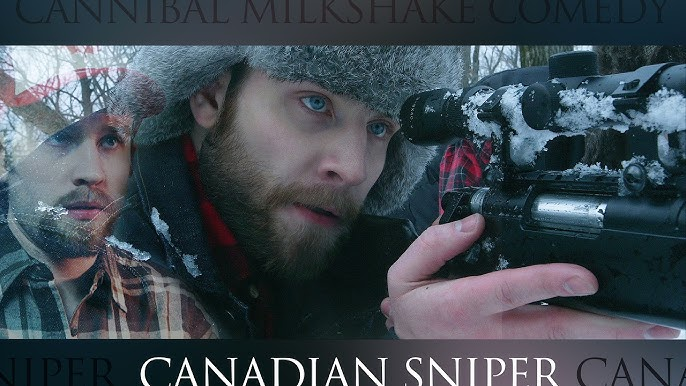
The Cast
Canadian Sniper hinges on a small but powerful ensemble:
- François Arnaud (I Killed My Mother, The Borgias): Arnaud delivers a tour-de-force performance as the unnamed sniper, conveying profound isolation through subtle expressions and body language. His nuanced portrayal captures the character’s guilt, shame, and disorientation, earning praise as a “solitary acting moment” that anchors the film’s emotional weight.
- Lothaire Bluteau (Jesus of Montreal): Bluteau plays Charron, a sheriff who interacts with the sniper, adding gravitas to the sparse supporting roles with his understated presence.
- Sophie Desmarais (Sarah Prefers to Run): Desmarais appears as Julie, a waitress, providing brief but poignant moments of human connection that highlight the sniper’s struggle to relate.
The decision to leave the protagonist unnamed universalizes his experience, inviting audiences to see him as a stand-in for countless veterans grappling with PTSD, a choice that amplifies Arnaud’s raw, immersive performance.
Production Details

- Director/Writer: Michel Kandinsky, a Canadian filmmaker, writes and directs, drawing from personal inspiration to craft a story that eschews war movie clichés for a meditative, almost experimental approach. His restrained style, while divisive for its slow pace, prioritizes authenticity over sensationalism.
- Producers: Kandinsky, Rick Bartram, and Dev Singh produce under OnOff Company, a small Canadian outfit, reflecting the film’s indie ethos. The modest budget shapes its minimalist aesthetic, relying on atmosphere over spectacle.
- Cinematography: Duraid Munajim’s evocative visuals, praised for their “rich and evocative” quality, use stark urban lighting and serene wilderness shots to mirror the sniper’s psyche, though some criticize the insect close-ups as distracting.
- Editing: Rick Bartram’s editing creates a non-linear structure, blending flashbacks and reality to reflect PTSD’s disorienting effects, though some viewers find it narratively uneven.
- Music: The film’s score is minimal, described as “musically nonexistent” by some, relying on ambient sounds and silence to underscore the sniper’s isolation, a choice that divides audiences.
- Filming: Shot in Canada, likely in 2023–2024, the production uses real urban and rural locations to ground the story, with a runtime of 83 minutes (though some sources cite 73 or 88 minutes).
Release and Distribution
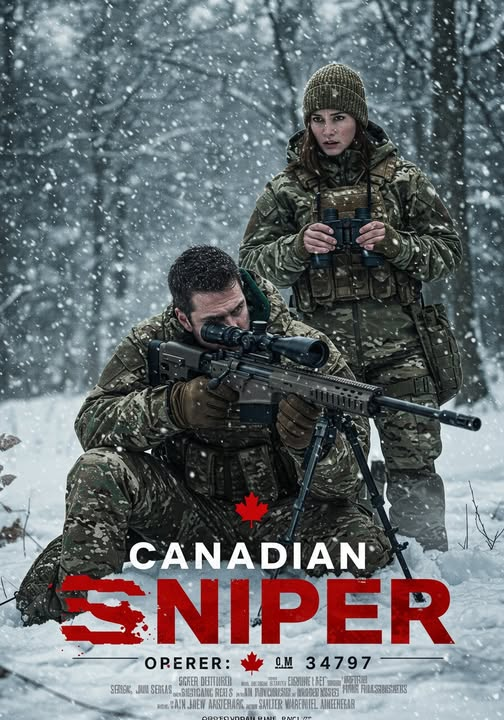
Canadian Sniper premiered at film festivals, including the Arizona International Film Festival, on December 12, 2024, before a wider release on streaming platforms like Prime Video (rent/buy), Tubi (free), Fawesome, and Apple TV (rated R). Its festival run and indie status limited theatrical showings, but its accessibility on streaming platforms has broadened its reach, with a 3.8/5 audience rating from 14 votes on some sites, though Rotten Tomatoes reports no critic or audience scores yet. Marketing emphasizes Arnaud’s performance and the film’s raw depiction of PTSD, with a tagline, “One bullet will change everything,” hinting at its emotional weight. A teaser trailer surfaced on Dailymotion in May 2024, generating early buzz.

Why It Matters
Canadian Sniper stands out in the war drama genre for its unflinching focus on PTSD’s psychological toll, inspired by Kandinsky’s friend who died by suicide after serving in Afghanistan. Unlike American Sniper, which blends action and biography, this film avoids glorifying combat, instead immersing viewers in the sniper’s fractured reality—insomnia, guilt, and blurred memories. Its universal protagonist and minimalist style resonate with growing awareness of veterans’ mental health, aligning with films like Thank You for Your Service (2017). The indie production, backed by OnOff Company, showcases Canadian cinema’s ability to tackle global issues, though its slow pace and insect motifs have sparked debate, with some calling it a “fascinating character study” and others noting its “narrative inconsistencies.”
The film’s festival presence and streaming availability make it accessible to niche audiences, particularly those drawn to character-driven dramas over action spectacles. Arnaud’s performance, likened to his work in I Killed My Mother, elevates the film, positioning him as a rising star in Canadian film. Its exploration of a soldier’s search for his father adds a personal layer, though some viewers find the plot directionless, reflecting its experimental ambition. In a genre often dominated by Hollywood, Canadian Sniper offers a quieter, more introspective perspective, contributing to the evolving narrative of war’s lasting impact.
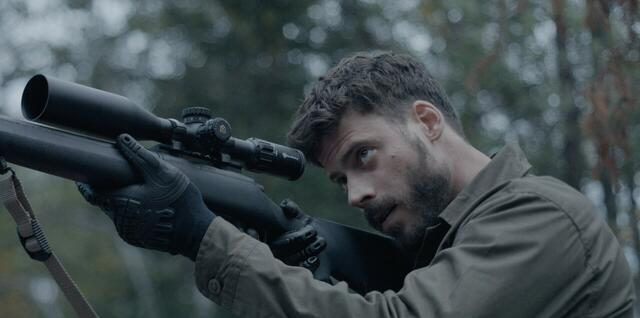
What to Expect
Audiences can anticipate a thought-provoking experience with Canadian Sniper (2024):
- Introspective Drama: A slow-burn narrative focusing on the sniper’s inner turmoil, with minimal dialogue and a focus on Arnaud’s expressive performance, ideal for viewers who appreciate films like Manchester by the Sea.
- Visual Poetry: Munajim’s cinematography contrasts urban alienation with wilderness serenity, though insect close-ups may polarize viewers.
- PTSD Realism: Authentic depiction of PTSD’s disorienting effects—time loops, flashbacks, and violent urges—rooted in real-world inspiration, offering empathy without easy resolutions.
- Minimalist Storytelling: A deliberate pace and sparse music prioritize atmosphere, which may frustrate action fans but reward patient viewers.
- Festival Appeal: Its indie roots and festival run make it a hidden gem for cinephiles, though its niche style limits mainstream appeal.
Challenges and Outlook

Canadian Sniper faces challenges due to its indie budget and unconventional choices. The slow pacing and lack of narrative clarity, criticized as “directionless” by some, may alienate viewers expecting a traditional war thriller, with the insect close-ups (mocked as “David Attenborough-esque”) dividing audiences. The 73–88-minute runtime is a “saving grace” for detractors but limits character depth, and the lack of a robust score weakens emotional impact. Arnaud’s performance is universally praised, but the film’s 3.8/5 audience rating and lack of Rotten Tomatoes scores suggest limited buzz. Its festival run and streaming release on Tubi and Prime Video maximize accessibility, but competition with 2024 blockbusters like Deadpool & Wolverine ($1.3 billion) may overshadow it.
Despite these hurdles, Canadian Sniper is a bold debut for Kandinsky, with potential for cult status among indie fans. Its focus on PTSD and Arnaud’s breakout role could inspire further Canadian dramas, though Kandinsky’s future may lie in documentaries, as some suggest. Fans should watch for festival screenings or stream it on Tubi for free, immersing themselves in a soldier’s silent struggle against the ghosts of war.